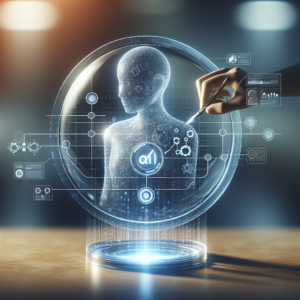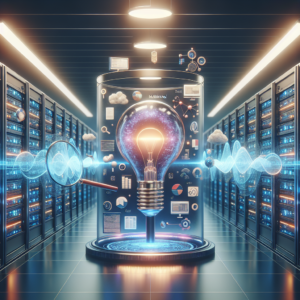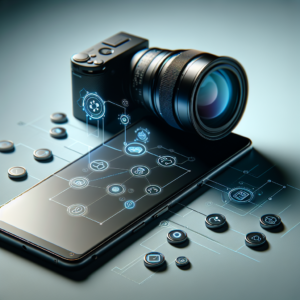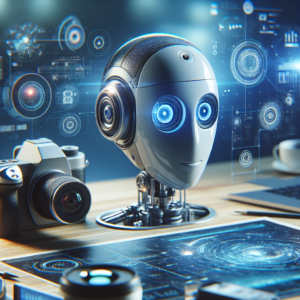What if I told you that the technology powering your favorite apps and services is often based on something called Machine Learning? It’s fascinating to think about how much these systems have integrated into our daily lives. In this piece, I’ll share some insights on the applications of Machine Learning in ways you might not have thought about.
Understanding Machine Learning
Machine Learning is a subset of artificial intelligence that focuses on building systems that learn from data and improve over time. I find it intriguing that instead of being programmed with fixed rules, these systems can uncover patterns in data and make predictions based on those patterns. This adaptability makes Machine Learning incredibly powerful.
How Does Machine Learning Work?
At its core, Machine Learning works through algorithms that can analyze data, identify patterns, and make informed decisions. Here’s a simple breakdown:
- Data Collection: The first step involves gathering data. This can be anything from photos to sales records, and the more diverse the data, the better.
- Processing: After gathering the data, it goes through a process of cleaning and organizing.
- Model Training: The cleaned data is used to train a model. During this phase, the algorithm learns to make predictions or categorize data.
- Evaluation: Once trained, I evaluate the model’s performance to see how well it makes predictions based on unseen data.
- Deployment: The model is then deployed into real-world applications, where it continues to learn and refine itself based on new data.
Types of Machine Learning
There are a few main types that I think are good to know about:
-
Supervised Learning: The model learns from labeled data. For example, I might train a photo recognition program with images tagged as “cat” or “dog.”
-
Unsupervised Learning: The model finds patterns in unlabeled data. For instance, it could cluster customer data into groups based on purchasing behavior without knowing what the groups represent.
-
Reinforcement Learning: This is where an agent learns to make decisions by receiving rewards or penalties. I find this kind of learning fascinating because it mimics how we learn through trial and error.
Machine Learning in Communication
Communication has transformed dramatically with the rise of Machine Learning, and I often find myself admiring how these applications enhance my interactions.
Smart Assistants
Smart assistants like Siri, Alexa, and Google Assistant leverage Machine Learning to understand and respond to my voice commands. They continually improve through my interactions, learning my preferences, and becoming increasingly helpful over time.
Spam Filtering
I really appreciate how email services use Machine Learning to detect and filter out spam. By analyzing patterns from my past behavior, they get better at identifying unwanted messages before they clutter my inbox.
Machine Learning in Entertainment
The entertainment industry is another area where Machine Learning plays a significant role. It’s amazing how these applications can improve my viewing and listening experiences.
Personalized Recommendations
Platforms like Netflix and Spotify make use of Machine Learning to recommend shows, movies, and music that align with my tastes. They analyze what I’ve watched or listened to and suggest new content, making my leisure time more enjoyable.
Content Creation
I find it remarkable that Machine Learning is even used in content creation. For example, some platforms can generate music or write articles based on the style of existing works. This opens up new avenues for creativity that I never thought possible.
Machine Learning in Healthcare
In healthcare, Machine Learning applications can lead to life-saving improvements. It’s reassuring to see how this technology is used to enhance patient care and treatment.
Disease Diagnosis
Machine Learning algorithms can analyze medical images and patient data to assist in diagnosing diseases. I often think about how this technology may provide doctors with insights that they might have missed, thereby improving overall patient outcomes.
Drug Discovery
The process of discovering new medications has also been revolutionized by Machine Learning. By analyzing extensive datasets, algorithms can identify potential candidates for drugs much faster than traditional methods. This means quicker access to effective treatments for patients, which I find incredibly hopeful.
Machine Learning in Transportation
Transportation has changed significantly with the advent of Machine Learning, making travel safer and more efficient for me.
Autonomous Vehicles
Self-driving cars are one of the most thrilling applications of Machine Learning. These vehicles utilize a complex array of sensors, cameras, and algorithms to navigate the roads. I often wonder how far we are from fully autonomous driving, as the technology continues to evolve.
Traffic Management
Machine Learning is now being used for traffic prediction and management. By analyzing data from various sources, municipalities can optimize traffic flow and reduce congestion. I find it fascinating that this technology can help to create smoother travel experiences.
Machine Learning in Financial Services
The financial sector has widely adopted Machine Learning, significantly impacting how I manage my money.
Fraud Detection
Banks and financial institutions use Machine Learning to detect fraudulent activities. By analyzing transaction patterns in real-time, these systems can alert me when something seems amiss, helping to protect my finances.
Personalized Banking
Machine Learning allows banks and financial apps to offer tailored services. I appreciate how my banking app can analyze my spending habits and suggest savings plans or investment opportunities that align with my financial goals.
Machine Learning in Retail
Shopping has been transformed by Machine Learning applications, enhancing my consumer experience in various ways.
Inventory Management
Many retailers utilize Machine Learning for inventory management. By analyzing data on demand, they can predict which products will sell, making sure that shelves are stocked with what I want when I want it.
Customer Insights
Retailers also use Machine Learning to understand customer behavior better. By analyzing purchasing patterns, they can craft targeted marketing strategies and promotions that resonate with me.
Machine Learning in Education
Education is another field where Machine Learning has made remarkable strides, and I really value how it personalizes learning experiences.
Adaptive Learning Platforms
With adaptive learning platforms, the curriculum can adjust based on my performance. I find it rewarding that as I work through lessons, the system learns my strengths and weaknesses, tailoring content to fit my individual learning pace.
Administrative Efficiency
Schools and universities use Machine Learning for administrative tasks such as grading and student enrollment. This efficiency allows educators to focus more on teaching and less on paperwork, benefiting both students and staff.
The Future of Machine Learning
As Machine Learning continues to evolve, I can only imagine the possibilities that lie ahead.
Enhanced Customized Experiences
I anticipate further developments in personalized experiences, whether it’s in entertainment, education, or even healthcare. With an ever-growing amount of data, Machine Learning models will become increasingly adept at meeting my unique needs.
Ethical Considerations
While the future is bright, I also recognize the importance of addressing ethical considerations. As we integrate Machine Learning deeper into our lives, I believe it’s crucial to ensure that these systems are fair, transparent, and respect privacy.
Conclusion
As I reflect on the various ways Machine Learning applications enhance my everyday life, I can’t help but feel excited about the future. From communication to healthcare, transportation to finance, this technology has woven itself into the fabric of our daily experiences. Understanding its capabilities helps me recognize how it has the potential to transform my life even further.
Machine Learning is not just an abstract concept; it’s a practical tool that I see becoming more prevalent every day. I look forward to watching how this technology evolves, bringing me new conveniences and advancements.






